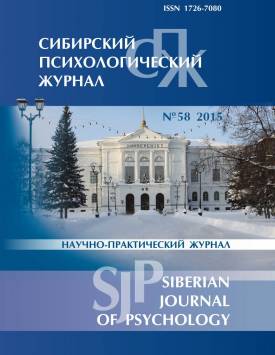Psychometric intelligence research of the peoples of the russian far east
Numerous studies allow characterizing the cognitive abilities of a large number of people. However, if we had made a map following these studies, then it would have turned out to be many "white spots" on it. This applies in particular to the many indigenous peoples of the Asian part of Russia. In this study, we made intelligence measurements of peoples of the Russian Far East. We also measures intelligence of European colonists living there. These measurements were compared with the data of the indigenous peoples. Russian Far East is a diverse, complex ethno-territorial system that developed over the last four or five centuries. During the conquest and development of the territory, the Europeans (mostly Eastern Slavic and partly Western Slavic colonists) have mastered the extended area from the lake Baikal to Kamchatka region, from Verkhoyansk Range to the Sea of Japan. They faced with the with the local population, who had much earlier stages of technological and socio-political development, and the local population itself also differed sharply from each other on the same parameters. The article provides a brief historiographical review on the group intelligence and the author's research of the Russian Far East population group intelligence. The research was made using Raven's matrices. The article forms the rationale for the progressive matrices usage and gives a brief history of it. It demonstrates a selection of the representatives of the following peoples studied: the Russians, the Nanais, the Udegeis, the Chukchi, the Koryaks and the Evens. The relevance of this article lies in the fact that recent intelligence studies on the indigenous peoples of Siberia have been held back in the 1920s. At the end of the 1920s a study of the Amur Evenkis (who also belong to Tungus-speaking peoples) was made. During this research Igor Bulanov studied 6 Evenki children from 10 to 15 years on Binet test, 17 children from 7 to 19 years on the Rossolimo test and 15 children on the Pintner test. It is obvious that such a distant research is difficult to use for understanding the current state of the indigenous population intellectual abilities. Therefore, this article extends the factual material on the study of intelligence of Russian indigenous peoples. Intermediate data of ongoing research of genetic and environmental determinants influence on group intelligence in the Russian Far East are presented.
Keywords
интеллект, групповой интеллект, тесты интеллекта, матрицы Равена, народы Севера, коренные народы России, intelligence, group intelligence, intelligence tests, Raven matrices, the peoples of the North, the indigenous peoples of RussiaAuthors
| Name | Organization | |
| Shibaev Vladimir S. | Far Eastern Federal University (Vladivostok) | wladimirdw@gmail.com |
References

Psychometric intelligence research of the peoples of the russian far east | Sibirskiy Psikhologicheskiy Zhurnal – Siberian Journal of Psychology. 2015. № 58.
